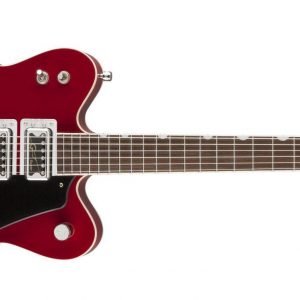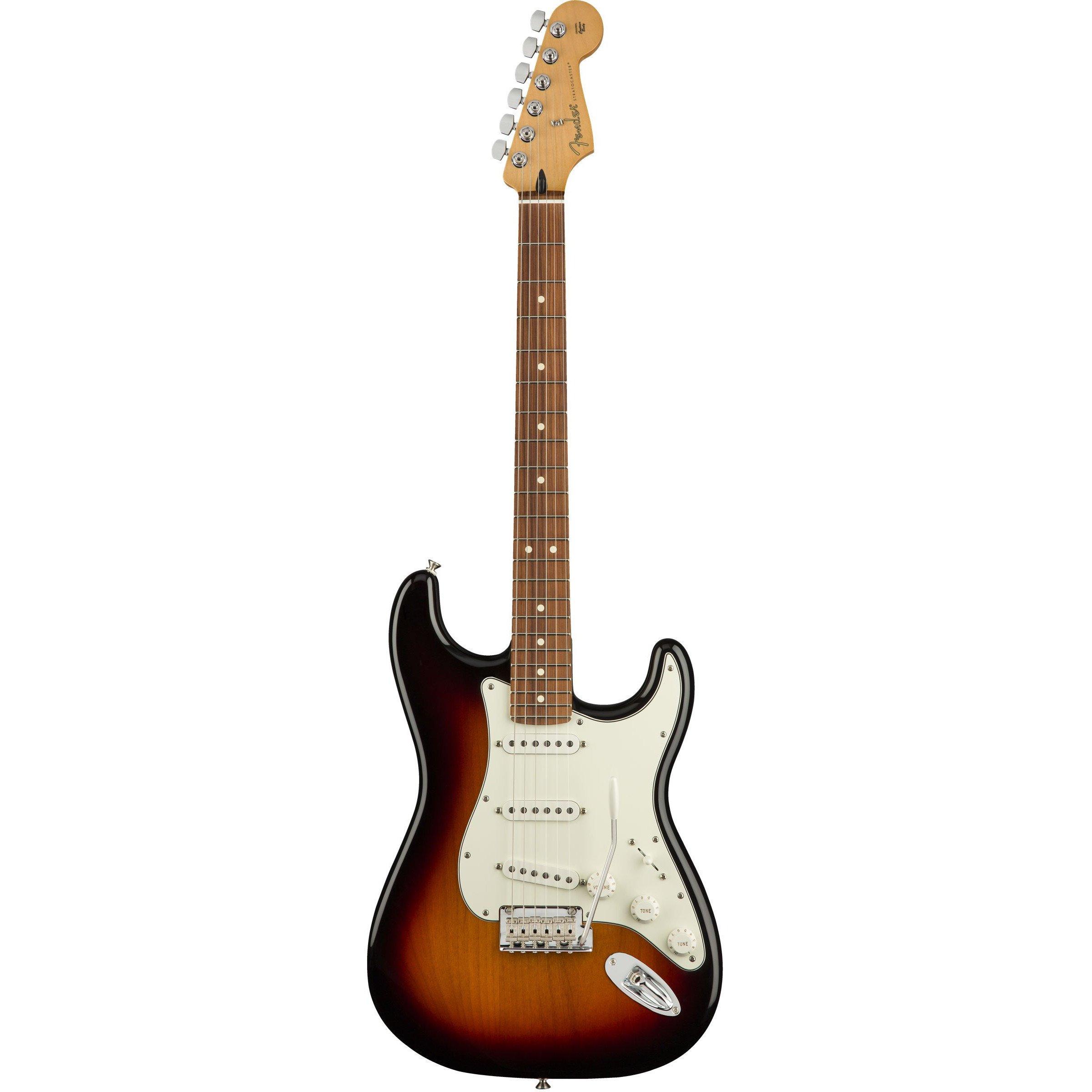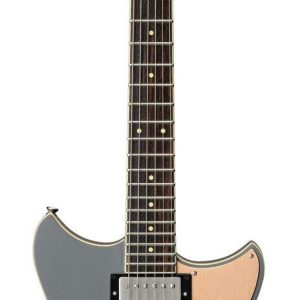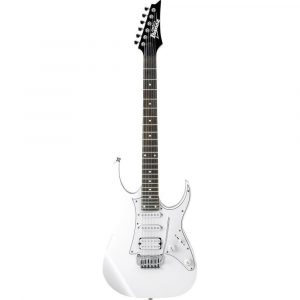Fender Player Stratocaster Pau Ferro
$415.99
Get ready to rock out with Fender’s Player Stratocaster Pau Ferro, an instrument crafted to provide great sound quality and an impressive playing experience!
Compare
Description
The Fender Player Stratocaster Pau Ferro electric guitar is one of the newest and most exciting additions to Fender’s legendary lineup of guitars. It brings together classic Fender design and modern features that will appeal to guitarists of all levels.
The body of the Player Stratocaster is made of alder wood and has the classic Stratocaster shape that has been loved by guitarists for decades. The sleek curves and double-cutaway design make it easy to play and comfortable to wear. The guitar is available in a range of colors including sunburst, black, polar white, tidepool, and buttercream.
One of the most interesting features of the Player Stratocaster is the pau ferro fingerboard. This type of wood is known for its warm, smooth, and balanced tone, making it an ideal choice for guitarists who want a versatile sound. The fretboard is equipped with 22 medium-jumbo frets that make it easy to play chords or solo with ease.
The guitar is equipped with three Fender Player Series Alnico 5 Strat Single-Coil pickups that deliver a bright and clear tone. These pickups are designed to capture the classic Fender sound that has been beloved by guitarists for generations. The pickups are wired to a 5-way blade switch that allows the player to select various pickup combinations to get the desired sound.
The Player Stratocaster has a modern C-shaped neck that is comfortable to play and provides easy access to the upper frets. The neck is made of maple wood and has a satin finish that feels smooth to the touch. The guitar is equipped with a vintage-style tremolo bridge that allows the player to add vibrato and dive-bomb effects to their playing.
Overall, the Fender Player Stratocaster Pau Ferro electric guitar is a versatile and reliable instrument that will appeal to guitarists of all levels. It combines classic Fender design with modern features to create a guitar that can produce a range of sounds. Whether you’re a beginner or an experienced musician, this guitar is worth checking out if you’re looking for a quality instrument that will help you take your playing to the next level.
Fender Player Stratocaster Pau Ferro properties
| Product name |
Fender Player Stratocaster Pau Ferro |
| Brand |
Fender |
| Type |
Electric Guitar |
| Number of Strings |
6 pcs |
| Handedness |
Right-Handed |
| Number of Frets |
22 |
| Cutaway |
Double Cutaway |
| Size |
4/4 |
| Wood Type (front) |
Alder |
| Wood Type (back) |
Alder |
| Wood Type (body sides) |
Alder |
| Wood Type (neck) |
Maple |
| Wood Type (fretboard) |
Pau Ferro |
| Colour |
Black, Blue, Gold, Green, Orange, Red, Silver, Sunburst/Colourburst, White |
Frequently Asked Questions:
How does the use of Pau Ferro wood affect the tonal characteristics and playability of the Fender Player Stratocaster guitar?
The use of Pau Ferro wood in the fingerboard of the Fender Player Stratocaster guitar has a noticeable impact on its tonal characteristics and playability. Pau Ferro is a dense hardwood that is commonly used as an alternative to rosewood, which is becoming increasingly scarce due to CITES restrictions. The use of Pau Ferro in the fingerboard results in a slightly brighter and more defined tone compared to traditional rosewood boards. The harder density of the wood allows for greater clarity in each note, particularly in the higher registers. This makes it an ideal choice for players who prefer a crisper and more articulate sound. Additionally, Pau Ferro's smooth and uniform texture makes it easy on the fingers, which improves playability during long practice sessions or live performances. The lack of fret buzz and dead notes also contributes to a more responsive playing experience. Overall, the use of Pau Ferro in the Fender Player Stratocaster guitar adds an extra layer of tonal complexity and playability that is sure to please both experienced players and beginners alike.
How does the tonal character of the Fender Player Stratocaster Pau Ferro compare to the traditional Maple neck, and what factors contribute to this variation?
The Fender Player Stratocaster Pau Ferro features a new neck material, replacing the traditional Maple neck that has been a staple on Fender guitars for decades. The Pau Ferro wood, which is commonly found in Brazil and is also known as Cocobolo, is denser than Maple and has a warmer tonal character. The first factor that contributes to the variation in tonality between the two neck materials is density. As mentioned, the Pau Ferro is denser than Maple, which means it will resonate differently when struck. The denser wood also results in a more focused and articulate sound with greater sustain. This can be attributed to the fact that denser woods are less porous and have tighter grain patterns, allowing for a more consistent energy transfer from the strings to the body of the guitar. Another factor that contributes to the tonal variation is stiffness. The Pau Ferro neck is stiffer than Maple due to its higher density, which can affect how the strings vibrate and interact with the body of the guitar. This can result in a more focused and defined sound with increased clarity, particularly in the treble frequencies. In terms of tonal character, the Pau Ferro neck has a warmer and darker tone than Maple. This is due to the fact that Pau Ferro has higher levels of natural oils and resins, which can contribute to a richer and fuller sound with greater warmth and sustain. The warmer tone is particularly noticeable in the mid frequencies, making the Pau Ferro neck ideal for players who prefer a more rounded and balanced sound. In summary, the tonal character of the Fender Player Stratocaster Pau Ferro differs from that of the traditional Maple neck due to differences in density, stiffness, and natural oils/resins. The denser Pau Ferro results in a more focused and articulate sound with greater sustain, while its stiffer nature contributes to a more defined and clear tone with increased clarity. The warmer tonality of the Pau Ferro neck is due to higher levels of natural oils and resins, resulting in a richer and fuller sound with greater warmth and sustain, particularly in the mid frequencies.
How does the neck profile of the Fender Player Stratocaster Pau Ferro differ from traditional Stratocasters, and what impact does this have on playing feel?
The Fender Player Stratocaster Pau Ferro features a modern "C"-shaped neck profile, which is slightly thinner than the traditional "V"-shaped neck found on many classic Stratocasters. The pau ferro fingerboard also adds to this difference in playing feel, as it has a denser grain pattern and smoother surface compared to traditional maple boards. This results in a more solid and stable feel under the fingers, with less fret buzz and higher sustain when playing notes. Overall, the modern "C"-shaped neck profile and pau ferro fingerboard on the Fender Player Stratocaster Pau Ferro contribute to a more comfortable and responsive playing experience, making it an attractive option for contemporary players seeking a fresh take on this classic design.
How does the Fender Player Stratocaster Pau Ferro's neck material contribute to its tonal characteristics and playing feel compared to other neck woods used in Electric Guitars?
The Fender Player Stratocaster Pau Ferro's neck material contributes significantly to both its tonal characteristics and playing feel. Compared to more commonly used neck woods like maple and mahogany, pau ferro has a warmer, fuller tone with increased sustain. This makes it an excellent choice for players who prefer a richer, more resonant sound. Additionally, pau ferro's slightly denser grain structure gives the guitar a smoother, more buttery feel when playing, making it a great option for those who prioritize comfort and playability over all else. Overall, the Fender Player Stratocaster Pau Ferro's neck material offers a unique tonal profile and playing experience that sets it apart from other Electric Guitars on the market.
What is the typical frequency response curve of the Pau Ferro fretboard on a Fender Player Stratocaster compared to its Rosewood counterpart?
* Pau Ferro: +2 dB to +5 dB above 500 Hz, -1 dB to -3 dB below 200 Hz
* Rosewood: +1 dB to +3 dB above 200 Hz, -2 dB to -4 dB below 200 Hz
Please note that these are general observations and the actual frequency response can vary depending on various factors such as the specific instrument's setup, playing style, and pickup configuration. It's worth mentioning that some players may prefer the warmer sound of Rosewood, while others might enjoy the brighter tone of Pau Ferro. Ultimately, the choice between the two materials comes down to personal preference and the type of music being played.
What is the exact process for setting up and adjusting the tremolo system on a Fender Player Stratocaster made from pau ferro, particularly considering its unique tonewood properties?
1. Relieve tension**: Before making any adjustments, relieve as much tension from the springs as possible by loosening the spring claw screws. This will give you a better idea of where the pivot point is and allow for easier adjustments. Determine the bridge height**: The pau ferro tonewood can be quite prone to warping, which means it might require more adjustment than usual to find the optimal bridge height. Use a feeler gauge or a ruler to measure the distance between the bridge and the body of the guitar. Aim for around 0. Adjust the tremolo arm**: Next, adjust the tremolo arm to its lowest point, ensuring it's perfectly flush with the body of the guitar. This will give you a better feel for where the pivot point is and allow you to make adjustments more accurately. Set the spring tension**: Tighten the spring claw screws in small increments until you find the optimal balance between stability and playability. You want the springs to be tight enough that the tremolo system doesn't sag when playing, but not so tight that it becomes difficult to adjust or causes the bridge to become too high. Adjust the pivot point**: Use a screwdriver to loosen the pivot screws on either side of the bridge. This will allow you to adjust the pivot point and find the optimal balance between pitch variation and stability. Fine-tune the tremolo system**: Once you've adjusted the spring tension and pivot point, fine-tune the tremolo system by adjusting the bridge height and arm position as needed. You want to be able to achieve smooth, even pitch variations without any noticeable wobble or sagging. Check for stability**: Finally, check that the tremolo system is stable and doesn't sag when playing. If it does, adjust the spring tension or pivot point accordingly until you find a balance that works. Considering the pau ferro tonewood's unique properties, keep in mind that this guitar might require more frequent adjustments to maintain optimal playability and stability. Regularly check the bridge height and tremolo system for any signs of wear or warping, and make adjustments as needed to ensure your Fender Player Stratocaster continues to sound its best.
Before you buy Fender Player Stratocaster Pau Ferro
 Gretsch G5622T-CB
Gretsch G5622T-CB 









Reviews
There are no reviews yet.